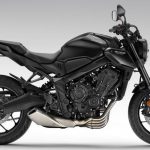Every vehicle consists of numerous components, making it difficult to pinpoint the exact cause of vehicle shaking. However, the main reasons for this phenomenon can be categorized as follows:
1. Tire:
Over time, tires can wear unevenly, resulting in uneven surfaces. These uneven surfaces, also known as “heavy spots” and “light spots,” can cause the vehicle to bounce while driving. If the heavy spot is located in the middle of the tire, it will cause the vehicle to bounce up and down during driving. On the other hand, if the heavy spot is situated on the side of the tire, it will lead to tire imbalance, causing the tire to shake from side to side while driving, similar to spinning an uneven or weighted object.
To address this issue, dynamic tire balancing devices can be utilized at repair shops. Technicians will add small lead weights of different weights to the “light spots” to balance them.
Modern suspension systems are lighter, enhancing the vehicle’s grip on the road and providing the driver with a better road feel. Nevertheless, this also makes it easier for vibrations to be transmitted into the passenger compartment. Tire imbalance can be felt at speeds around 50 km/h and is particularly pronounced at speeds of approximately 80 km/h. If the vibrations are noticeable through the steering wheel, it is recommended to check the front tires. Conversely, if the vibrations are felt more in the rear seats, then the rear tires should be balanced.
2. Wheel:
During driving, the wheel may come into contact with curbs, which might not immediately cause damage but can result in shaking later on. This is because the wheel or axle might become bent, leading to a deviation of the wheel’s rotational movement from its intended path, thereby causing vibrations. Another possibility is misplacement or loss of the balance weights used for dynamic balancing.
Technicians can check for wheel or axle bending by employing a measuring tool to measure the deviation. Most manufacturers allow for no more than 1/32 of an inch deviation. Steel wheels can be straightened, while aluminum wheels (cast wheels) may need to be replaced.
3. Brake system:
Vibrations occurring during braking indicate that the brake drum or disc may be bent, warped, or unevenly worn. Excessive dirt on the brake drum or disc surface can also contribute to this phenomenon. Such vibrations are most noticeable at high speeds since the rotating parts experience uneven forces from the brake pads, resulting in significant impacts that cause shaking or jerking. To rectify this, typically, the brake disc or drum is removed, cleaned, and straightened if bent.
In the case of uneven wear, a suitable solution is to cut off the outer layer of the disc to create a flat and smooth surface. This not only eliminates vibrations but also enhances braking performance by removing the hardened metal layer on the disc’s surface. However, this method should not be overused as it may reduce the lifespan of the brake disc or drum.
4. Powertrain system:
The powertrain system encompasses various components such as the gearbox, drive shafts, universal joints, main drive, and differential gear, which are responsible for transferring motion from the engine to the wheels. During operation, these components continuously undergo rotational movement. Therefore, any damage or wear in these components can lead to vehicle shaking.
Worn or loose universal joints, in particular, can cause vibrations, particularly during acceleration or deceleration. This is understandable considering that the rotational speed of the drive shaft is 3-4 times higher than that of the wheels. It is advisable to check the universal joints and replace them if they are loose. Continuing to use worn universal joints can not only cause shaking but also produce unpleasant noise.
5. Engine:
This reason may seem unreasonable, especially with modern engines. Nevertheless, it is worth acknowledging that when the engine is running, hundreds of different components engage in rotational movements. Despite achieving optimal balance through balancing shafts, the involvement of numerous components with varying rotation speeds still produces certain vibrations.
To eliminate these vibrations, manufacturers commonly mount the engine on rubber mounts, also known as engine mounts. This explains why we hardly experience any vibrations when vehicles are new. However, after a period of use, the elasticity of these rubber mounts gradually decreases, resulting in the appearance of vibrations.
Furthermore, if the engine experiences misfiring, the shaking and jerking will become noticeable. Misfiring can be easily checked by disconnecting one high-pressure line at a time from the spark plugs on the engine. If disconnecting a line does not alter the engine’s vibration, it indicates that the corresponding cylinder is not functioning. Different solutions can be implemented to address this issue, depending on the cause.
Note: The information provided above originates from a user named “anhduc_car” on the forum.autodaily.vn.












































![[QUICK REVIEW] Imported Lexus LX600: Luxurious and Available for Immediate Delivery](https://vnauto.net/wp-content/uploads/2024/02/xehay-LexusLX600-05092022-2-100x70.jpg)
![[Quick Review] Hyundai Custo soon to be launched in Vietnam: Kia Carnival, beware](https://vnauto.net/wp-content/uploads/2023/10/xehay-hyundaicustin-01092023-9-100x70.jpg)
